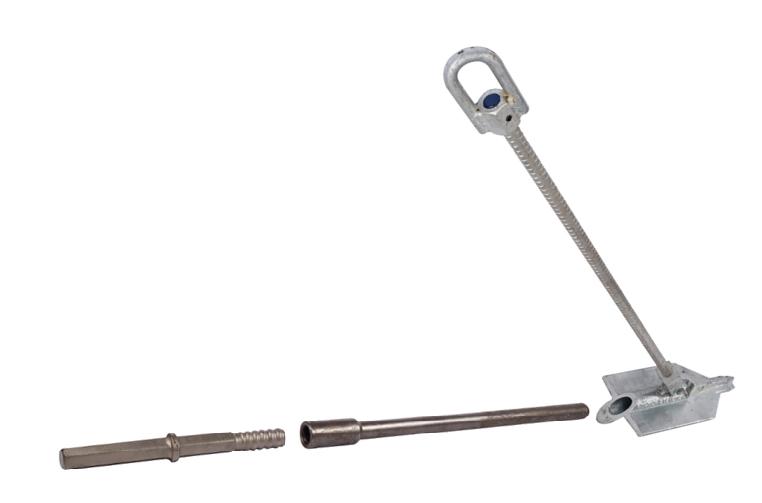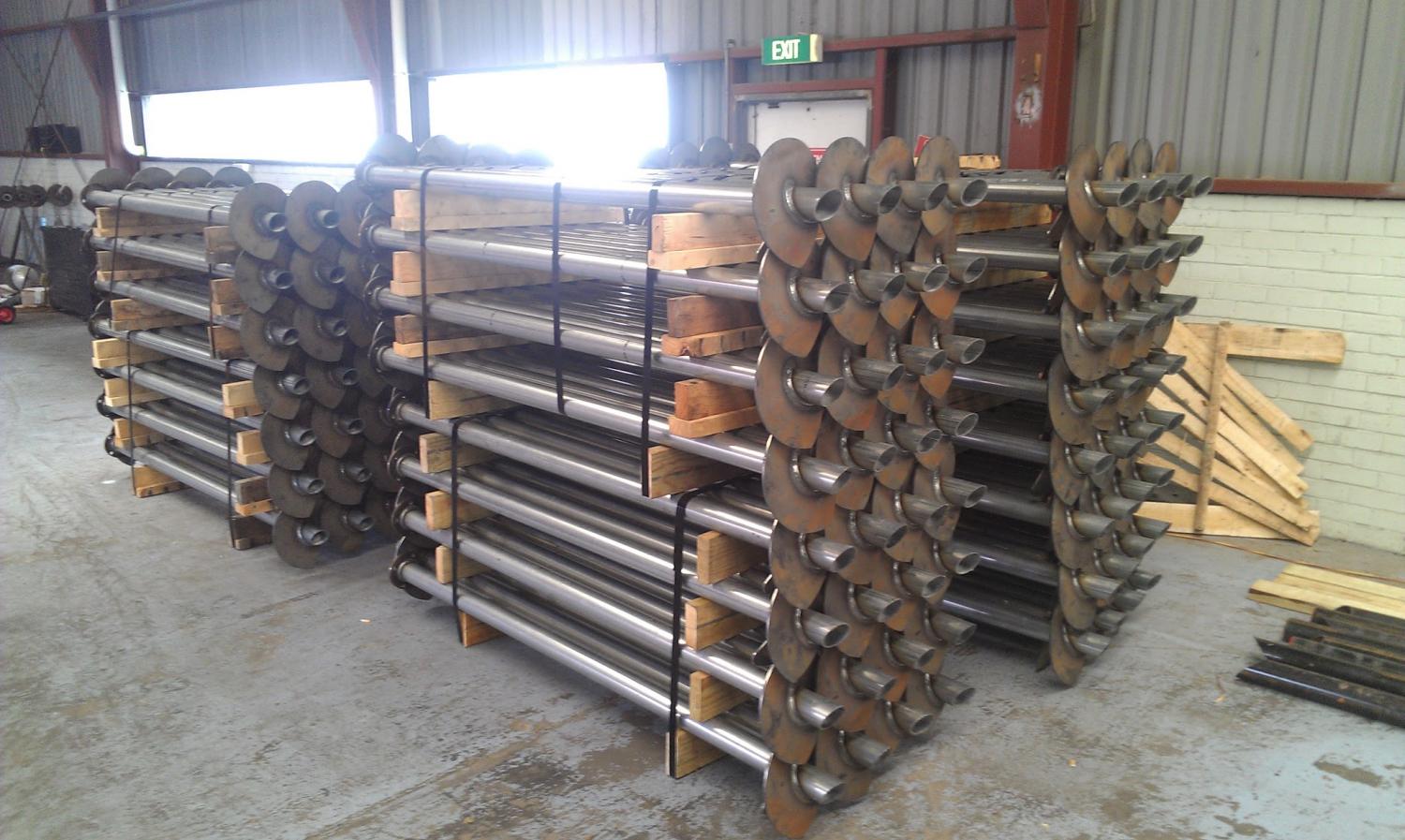Manta Ray anchors: Engineered to Stabilize Challenging Soil Conditions
Wiki Article
How Heavy-Duty Earth Anchors Work: A Comprehensive Guide to Dirt Anchoring Solutions
Durable Earth supports play an essential duty in providing stability and assistance in numerous building and construction applications. By installing deeply into the ground, they resist lateral and upright forces successfully. Various sorts of anchors accommodate different dirt conditions, making them flexible. Comprehending their technicians and setup strategies is essential for taking full advantage of efficiency. What elements affect their effectiveness, and just how do they contrast to typical techniques? The solutions may amaze you.Comprehending Sturdy Earth Anchors
Heavy-duty Earth supports work as important components in various building and construction and landscape design jobs, giving security and support in tough dirt problems. These anchors work by being embedded into the ground, where they withstand side and vertical pressures. Their layout enables protected attachment to structures, guaranteeing they stay anchored against dirt movement or external loads.The performance of heavy-duty Earth supports mainly relies on the sort of dirt and the anchor's installment deepness. Correct installment methods are important, as they determine the anchor's holding ability. Ecological variables, such as wetness and freeze-thaw cycles, can additionally affect performance.These anchors are regularly made use of in applications varying from securing fencings and preserving walls to stabilizing short-term frameworks throughout negative weather conditions. Understanding the concepts behind heavy-duty Earth supports is essential for experts looking for to improve the resilience and safety of their jobs.Kinds Of Heavy-Duty Earth Anchors
Various sorts of sturdy Earth supports are made to meet particular requirements based upon dirt problems and task demands. Helical supports, featuring screw-like blades, work in softer dirts, providing high load capacities and simple installment. Driven anchors, which are hammered into the ground, are ideal for rocky terrains and offer instant tons support. Tie-back anchors are generally used in maintaining wall applications, enabling lateral support by securing right into the ground at an angle. One more kind is the cast-in-place anchor, perfect for concrete applications, as they are incorporated into structures for boosted security. Dirt screw supports are functional options that can be utilized in various dirt kinds, giving trusted tension and compression capabilities. Each kind offers distinctive applications, making certain security and safety and security in building and construction and landscape design jobs. Understanding these alternatives permits informed choices in selecting the suitable Earth anchoring remedy.The Mechanics of Dirt Anchoring

Understanding the technicians of dirt anchoring requires an evaluation of different sorts of Earth anchors and their installation strategies. Each support type provides one-of-a-kind characteristics that influence its performance in different soil conditions. Appropriate setup approaches are necessary for taking full advantage of the anchoring system's stability and performance.
Types of Earth Anchors
Earth supports, essential parts in soil anchoring systems, come in numerous types, each developed for particular applications and soil problems. One of the most common kinds include screw supports, which are turned into the ground, supplying strong side resistance. Helical supports include blades that allow for efficient installment in numerous dirt types, making them suitable for both momentary and permanent applications. Driven supports, generally made from steel, are hammered into the soil and are efficient in rough or dense environments. Auger anchors utilize a helical style to promote installation in softer soils. Ultimately, plate anchors are composed of a level plate buried flat, dispersing lots over a larger location, ideal for applications needing high tons abilities in natural dirts.Setup Strategies Described
Correct installation methods are important for the efficiency of soil anchoring systems. The process commonly begins with site analysis, verifying the chosen place can sustain the anchor's lots. After determining the right anchor type, appropriate hole deepness and angle must be developed. The installment entails driving the anchor right into the ground utilizing specialized devices, such as hydraulic or hands-on drivers, to achieve best embedment. Post-installation, tensioning the support is essential to ensure stability; this is often confirmed with lots testing. Additionally, bordering dirt conditions should be monitored to prevent displacement. Following these strategies not only enhances the support's performance however additionally prolongs its life expectancy, offering reliable support for different applications.Applications of Heavy-Duty Earth Anchors
While durable Earth anchors additional info are commonly connected with building and landscape design, their versatility encompasses a range of applications across different industries. In civil engineering, they offer essential assistance for maintaining walls, ensuring security in areas vulnerable to dirt erosion. The aquatic field makes use of these supports for safeguarding anchors and marinas, preventing motion triggered by tides and currents. Additionally, in the telecommunications industry, sturdy Earth anchors are substantial for maintaining cell towers and various other tall frameworks versus wind forces. Agricultural applications additionally profit, as these anchors can protect structures like greenhouses and livestock fencing, guaranteeing they hold up against rough weather. Additionally, in sustainable energy projects, such as wind ranches, Earth anchors play an essential role in safeguarding wind turbine foundations, boosting total security and performance. This wide variety of applications highlights the versatility and integrity of durable Earth anchors throughout different areas.Benefits Over Standard Anchoring Methods
Although typical anchoring techniques have long been relied upon for stability, durable Earth anchors supply substantial advantages that boost performance and efficiency. One major advantage is their exceptional load-bearing ability, which allows them to stand up to higher forces without failing. This strength makes them optimal for requiring applications, such as in building and utility installations.Additionally, sturdy Earth anchors are developed for much deeper installation, offering better security in various soil problems, consisting of sandy or loose soils. Their resistance to deterioration and ecological elements ensures a much longer life-span and reduced maintenance expenses compared to standard methods.Moreover, these supports can be mounted with minimal disturbance to the surrounding area, protecting the stability of the landscape. On the whole, heavy-duty Earth anchors present a reliable and trustworthy solution for anchoring needs, surpassing the limitations typically connected with typical anchoring strategies.Installment Refine and Finest Practices
The setup procedure for soil anchoring services begins with comprehensive preparation and site assessment to guarantee peak efficiency. Following this, a step-by-step setup overview provides clear instructions for effective implementation (tensile load anchors). Sticking to these best practices is essential for attaining reliable and durable anchoring outcomesPreparation and Website Analysis
Efficient preparation and detailed website assessment are important action in the installation of dirt anchoring solutions. Before setup, the soil kind should be analyzed to establish its bearing capability and suitability for securing. Conducting a geotechnical study can offer important details regarding dirt structure, moisture degrees, and potential ground motion. Additionally, recognizing existing structures, plant life, and utilities is important to stay clear of interference throughout installation. The location should be removed of debris and challenges to guarantee risk-free access for devices. Weather conditions should likewise be checked, as unfavorable problems can affect both security and installment effectiveness. By diligently preparing the website and assessing all relevant aspects, the possibility of click reference successful support efficiency is considerably raised.Step-by-Step Installation Guide
A thorough setup procedure is vital for achieving suitable efficiency of soil anchoring options. The installment starts with selecting the suitable anchor kind and assuring the website is free from debris. Next, appropriate opening positioning is established based on load requirements. When the place is developed, openings are pierced to the defined deepness and size making use of the correct tools. The anchor is then inserted into the hole, making sure it is lined up properly. After protecting the support, dirt is backfilled and compressed to improve security. It is important to adhere to supplier guidelines throughout the procedure. A post-installation inspection confirms that the anchors are adequately positioned and working as planned, offering trustworthy assistance for the designated application.
Maintenance and Examination of Earth Anchors
Routine upkeep and evaluation of Earth supports are vital for ensuring long-lasting efficiency and stability. Regular checks permit the early discovery of issues such as deterioration, loosening, or soil activity. Inspectors must look for indications of corrosion or degradation on the support components, especially at the link factors. Additionally, the bordering dirt ought to be examined for disintegration or changes in wetness web content, which can affect anchor effectiveness.It is suggested to establish a routine examination schedule, ideally a minimum of annually, depending upon ecological problems. During evaluations, all noticeable parts ought to be cleaned up to get rid of dust or Get the facts debris that might conceal potential issues. Any type of signs of distress, such as turning structures or uncommon settling, must motivate immediate examination. Proper documents of evaluations can aid in monitoring anchor efficiency with time and help with timely maintenance activities, ensuring the supports stay dependable and practical.Frequently Asked Questions
What Materials Are Heavy-Duty Earth Anchors Generally Made From?
Heavy-duty Earth supports are commonly built from resilient materials such as galvanized steel or stainless-steel, making sure stamina and resistance to corrosion. These products supply lasting support and security in various dirt conditions and applications.How Do Dirt Conditions Influence Support Performance?
Dirt conditions greatly affect anchor efficiency. Elements such as dirt type, dampness content, and compaction influence the anchor's grasp and stability, with natural soils often supplying better resistance than loosened or sandy soils, influencing overall performance.
Can Heavy-Duty Earth Anchors Be Reused After Elimination?
Heavy-duty Earth anchors can be recycled after removal, supplied they are inspected for damages and wear. Correct cleaning and upkeep enhance their durability, ensuring efficient performance in succeeding installments when problems enable safe reinstallation.What Are the Ecological Influences of Utilizing Earth Anchors?
The environmental impacts of utilizing Earth anchors include prospective dirt disruption, disturbance of neighborhood environments, and feasible contamination of groundwater. Nevertheless, if utilized sensibly, their advantages usually exceed these issues, advertising security in various applications.Just how Do I Choose the Right Anchor for My Job?

Report this wiki page